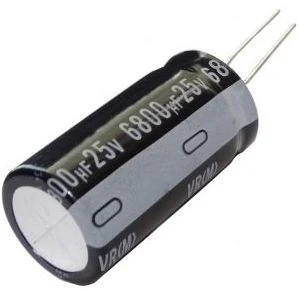Hey there, fellow tech enthusiasts! If you're into electronics, you've probably heard of capacitors, right? But do you really know what they are and how they work? Well, let's dive into this electrifying topic together and demystify the capacitor!
What's a Capacitor, Anyway?
Alright, so picture this: a capacitor is like a nifty little gadget that can store energy in an electric field. Imagine two conductors with equal but opposite electric charges, and voilà, you've got yourself a capacitor!
Sometimes, people also call it a "condenser." Now, don't be fooled by the jargon; every multi-conductor setup has capacitance, but real capacitors have these thin metal plates stacked together to form a compact device. But hold up! Before we jump into all the tech stuff, let's take a quick look at the history of capacitors.
The Origins of Capacitors: An Ancient Spark
Alright, so we know the ancient Greeks were pretty awesome in arts and sciences, but did you know they could create sparks too? Yup, that's right! Around 600 B.C., a smarty-pants called Thales of Miletus discovered that rubbing amber on spindles could generate sparks. Pretty cool, huh?
However, the Greeks didn't realize that by placing an insulator between two metal plates, the charge density could skyrocket. Fast forward to the 18th century, and boom, that's when folks started fully tapping into this potential.
The Pioneer: Ewald Georg von Kleist
So, who's the genius behind the first-ever capacitor? Well, it's none other than Ewald Georg von Kleist, and he rocked the world in October 1745 with his groundbreaking invention. Picture this: a glass jar wrapped in metal both inside and outside. The metal on the inside connected to a rod that went through the lid, ending in a metal ball. Quite the setup, right?
Ben Franklin's Big Discovery
Not long after Kleist's discovery, the great Benjamin Franklin decided to play around with a device called the Leyden jar, created by a Dutch physicist named Pieter van Musschenbroek. And boy, did he unravel some mind-boggling stuff!
Franklin figured out that the electricity was stored in the glass, not in the water as everyone had previously thought. And you know what? That's why they used to measure capacitance in "jars." One jar was equal to 1 nanofarad (1nF).
Unraveling the Capacitor's Superpowers
Alright, let's get to the fun part. Imagine a capacitor as the cooler, simpler cousin of a battery. Both can store electrical energy, but capacitors can't produce new electrons. They're like electron hoarders!
So, a capacitor has two terminals sandwiching a dielectric material. For a rough version, all you need is two pieces of aluminum foil and a piece of paper, and voilà, you've got a basic capacitor.
Lightning: Nature's Electric Show
Ever wondered how capacitors are in action in nature? Well, just look up at the sky during a thunderstorm, and you'll see a natural example right there! Lightning is like the ultimate capacitor discharge.
Imagine the clouds as one plate and the ground as the other, and when the charge builds up, BOOM! Lightning strikes! It's like an epic release of energy between the two plates.
A Handy Analogy for Better Grasp
Okay, let's make things even clearer. Imagine a capacitor as a water reservoir hooked up to a pipe. The reservoir stores excess water pumped from the system, and when you need water, it flows out of the reservoir, keeping the pressure steady. Similar to that, a capacitor can be likened to the reservoir, holding onto that electrical energy until you need it.
The Farad: The Unit of Capacitance
Now, let's talk numbers for a sec. The unit of capacitance is called a "farad." A 1-farad capacitor can store one coulomb of charge at 1 volt. Wait, what's a coulomb? It's the rate of electron flow, like 1 coulomb of electrons per second. So, a 1-farad capacitor can hold 1 amp-second of electrons at 1 volt.
Size Matters: Big Capacitors and High Voltage
Hold your horses, though! Don't think a 1-farad capacitor is tiny. Depending on the voltage it's handling, it can be pretty hefty! High-voltage capacitors can pack quite a punch, so don't underestimate their power.
Wrapping It Up
There you have it, folks! A capacitor may seem like a simple electronic component, but it plays a vital role in storing and releasing electrical energy when needed. From ancient sparks to modern-day gadgets, capacitors have come a long way, and we owe a big thanks to those ingenious minds who paved the way for this electrifying wonder! So, next time you see a capacitor in action, you'll know the story behind its magic. Until then, stay charged and keep exploring the electrifying world of electronics!

